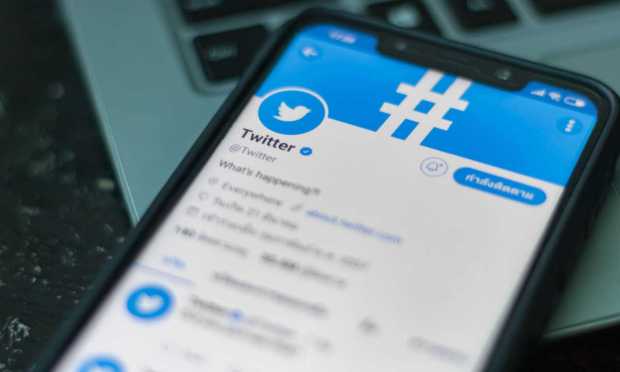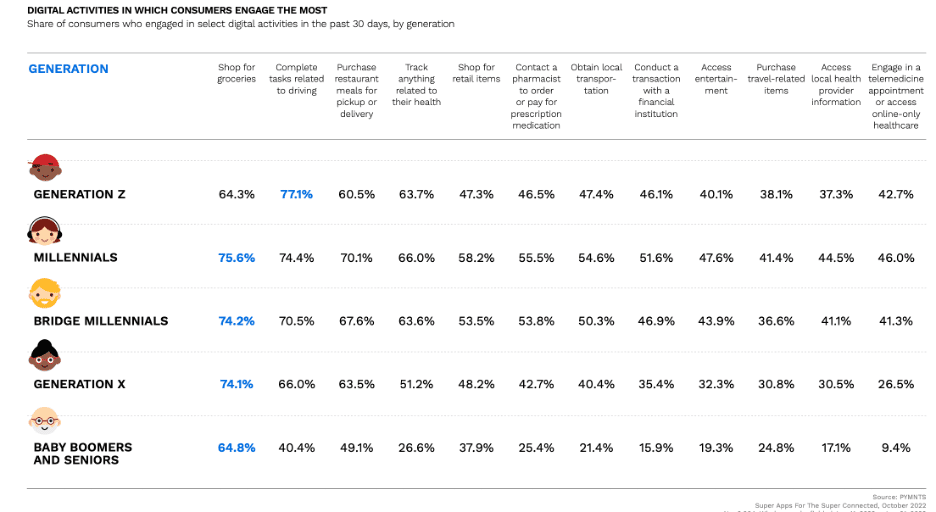Elon Musk Super Far From Goal of Twitter Super App

The idea of creating a super app is hardly new, and won’t be easy for Twitter.
“Buying Twitter is an accelerant to creating X, the everything app” Musk tweeted on Oct. 4, just a few weeks before his deal to purchase the social media platform closed.
Hugely popular in Asia but not yet in the West, super apps are platforms whose native solutions encompass everything from ride hailing and eCommerce to mobile payments, photo sharing, video chatting and even government services. WeChat is widely regarded as the gold-standard for providing this critical mass of services.
Despite the Western world’s more siloed approach to online platforms, PYMNTS research shows that 96 million consumers across the U.S., the U.K., Australia and Germany are “highly interested” in a super app providing digital infrastructure support for their daily lives.
Our survey showed that most generations are increasingly already part of a “connected-tech” ecosystem, viewing their connected devices as tools to organize their time and optimize their daily activities.

Can Musk Do It?
For his acquisition of Twitter to work out as he’d like, Elon Musk must find some way to either supersize the company or fold it into a larger “X” super app network.
“Twitter probably accelerates X by 3 to 5 years, but I could be wrong,” Musk says.
“X” was of course the first name of what later became PayPal, and Musk repurchased the domain name in July of 2017.
Twitter has long held sway in both culture and politics, but its town-square style platform has struggled to turn a profit or create a money-making vertical beyond ad revenues. Super apps like WeChat enjoy expansive business models, connecting every facet of daily life through in-platform mini apps that are less vulnerable to the loss of anchor client ad accounts.
In fact, in just the first four weeks or so of owning Twitter, Musk’s brash and arguably not-brand-safe personality has reportedly managed to drive away half of the company’s top 100 advertisers. These businesses added $750 million to Twitter’s notoriously poor balance sheet in 2022 alone, and many other advertisers while not leaving entirely, are pumping the brakes on their business relationship with the social media platform as a result of its new ownership.
Turning Twitter into the X super app may be the only realistic way Musk, and his investor cohort, can manage to not lose their shirts on the $44 billion purchase of the platform, but clearly lots more works needs to be done.
Mobile Payments
Part of the reason that the Western hemisphere has primarily relied upon single-use platforms and apps, outside of the walled garden of China’s “Great Firewall,” is that super apps like WeChat make most of their money through mobile payment integrations, and the West lags the East in digital payment and mobile wallet adoption.
An all-in-one ecosystem is a highly attractive, captive commerce environment.
As PYMNTS reported, Musk has indicated that “Twitter 2.0” will feature a payments solution. Musk, who cut his teeth co-founding PayPal, knows the payments business well and has long been trying to disintermediate the automated clearing house system run by big banks.
Other social media platforms have tried, and failed, to sign their billions of users up for next-generation payment solutions. Meta tried and failed with its cryptocurrency project, Libra, although the company has been finding some success by integrating shoppable content into Instagram.
Pinterest shopped itself around to PayPal last year, before dipping its own toes into the increasingly popular social-shopping-as-fallback with its acquisition of The YES.
The Tesla Factor
Musk may similarly look to a variety of best-fit social media business models like social shopping, or tiered subscription access to boost Twitter’s profitability, but it may be the synergies with his other companies that add the most value to the consumer experience.
His electric vehicle (EV) company, Tesla, is well positioned to help drive a future where smart vehicles become major portals for entertainment and shopping.
PYMNTS’ Karen Webster recently spoke with Ali Almakky, global head of Payments Solutions for Mobility at J.P. Morgan Payments, who said an “omnichannel inside-car experience” may become ubiquitous in the near-future.
Advertising alone is unlikely to get Twitter, or even “X,” to where Musk wants, and his investors need him, to be. A “super app style” integration with Tesla cars could help, but it bears stating that a paired EV network and social media platform do not a super app make.
For more information on super apps, and the emergent consumer behavior behind their adoption, download PYMNTS’ free report, “Super Apps For The Super Connected.”
